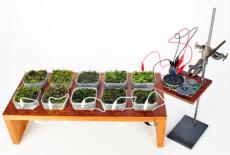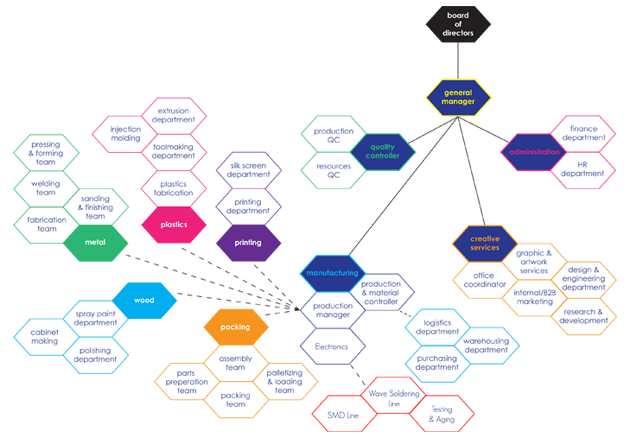Promotech News
-
 Moss FM: First Plant-Powered Radio Uses "Biological Solar Panels"
Moss FM: First Plant-Powered Radio Uses "Biological Solar Panels"Moss FM is the world’s first plant-powered radio! The neatly arranged pots of moss form a Photo Microbial Fuel Cell that captures electrons generated during photosynthesis and converts them into electricity, even when there is no light. The project was developed by Swiss designer Fabienne Felder in collaboration with Cambridge University scientists Dr. Paolo Bombelli and Ross Dennis. While the technology is still in its infancy, the team hopes that it will become commercially viable in as little as...more
posted on February 11, 2014 -
 Qatar Unveils Luxurious Off-Grid Floating Hotels for 2022 World Cup
Qatar Unveils Luxurious Off-Grid Floating Hotels for 2022 World CupSigge Architects has partnered with Global Accommodation Management to propose a series of floating hotels and apartments for the 2022 World Cup in Qatar. The nation has been worried about accommodating the influx of soccer enthusiasts, and these floating hotels and apartments will help accommodate over 25,000 people in a space-saving and—the designers claim—energy efficient manner.
Sigge Architect’s designs are linked to the mainland by boats and new transit lines in Qatar....more
posted on January 27, 2014 -
 India plans world’s biggest solar project. Now about the financing …
India plans world’s biggest solar project. Now about the financing …The sun sets over the parched Indian state of Rajasthan, where the world’s biggest solar array is planned.
India has just 2,200 megawatts of grid-connected solar power — less than a quarter of the capacity in the U.S. But four years ago, the heavily coal-dependent country had only 18 megawatts, so it’s been quickly upping its game.And now it’s talking up plans to build the world’s biggest solar power plant in the desert-dominated state of Rajasthan, which...more
posted on January 24, 2014 -
 Promotech Launching the new website
Promotech Launching the new websitePromotech-ltd is pleased to announce the launch of the new and improved corporate website in January 2013. The new site is redesigned with a new appearance and a lot of new information making it easier for you to find information and access services. We will be adding information regulary featuring our newest products and services. Take a look! We sincerely hope you enjoy visiting it. Please let us know if you have any questiions.
moreposted on January 10, 2013 -
 Chinese Biogas Manual
Chinese Biogas ManualChina has huge rural/agricultural communities that traditionally struggled with energy production and sanitation. Part of the government's response was in the form of the attached manual. Its effectiveness is immense, as it empowers people to construct and operate their own digesters within their communities. Once the digester is constructed it serves the needs of the whole community, providing biogas to run agriculural machinery, heat water, or power stoves. As well as providing energy it provided a way...more
posted on January 07, 2013 -
 Red dye plant could lead to green battery
Red dye plant could lead to green batteryAn organic coloring from a plant used to create dye for textiles can be turned into a highly effective, natural cathode for lithium-ion batteries.
Scientists at Rice University and the City College of New York have found that the madder plant or Rubia tinctorum can produce purpurin, an organic molecule that can electrochemically interact with lithium and bind lithium ions.
Purpurin is found in the roots of the madder plant, the same roots which have been boiled to color fabrics in civilizatio...moreposted on January 07, 2013 -
 Peel-And-Stick Solar Panels:
Peel-And-Stick Solar Panels:For all their promise, solar cells have frustrated scientists in one crucial regard -- most are rigid. They must be deployed in stiff, often heavy, fixed panels, limiting their applications. So researchers have been trying to get photovoltaics to loosen up. The ideal: flexible, decal-like solar panels that can be peeled off like band-aids and stuck to virtually any surface, from papers to window panes.
Now the ideal is real. Stanford researchers have succeeded in developing the world's first peel-a...moreposted on December 07, 2012





